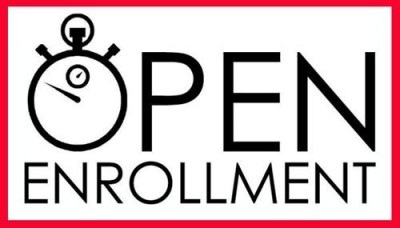As we step into a fresh 2015, as we are planning our goals and objectives for 2015 it’s interesting to remember that the health insurance open enrollment period is only 10 months away for Open Enrollment 2016.
Below are six major changes that impact consumers and Health Insurance Exchanges as we jump into 2015. Thinking ahead will help your organizations anticipate more effectively and prepare for an amazing 2016 Open Enrollment!
1. Change to 2016 Open Enrollment Dates
CMS Issued the HHS Notice of Benefit and Payment Parameters for 2016 Proposed Rule, posted November 21st, 2014. The Open Enrollment period in 2015 was November 15, 2014 through February 15, 2015. However, for the 2016 Open Enrollment period that is changing. For 2016 the rule proposes the annual Open Enrollment Period for 2016 and beyond begins on October 1 and run through December 15 of the year prior to the benefit year. Initially 2016 Open Enrollment was slated from October 15, 2015 through December, 7, 2015 to have the same dates as Medicare open enrollment, however, that since has changed.
2. Telephonic Support Expanded
The above rulemaking also proposes to improve meaningful access standards by requiring that all Marketplaces, QHP issuers, and web-based health insurance brokers provide telephonic interpreter services in at least 150 languages in addition to the existing requirement of providing language services.
3. Auto-Enrollment for 2016
The rule takes steps to help consumers keep their premiums low. Under current rules, consumers who do not take action during the open enrollment window are generally re-enrolled in the same or similar plan they were in the previous year, even if that plan experienced significant premium increases. Under these proposed rules, CMS is considering giving consumers the option of being defaulted into a lower cost plan rather than their current plan. This will mean changes for Exchanges to re-align their notification, consumer letters, and auto-enrollment business and technical processes.
4. The IRS 1095-A
Consumer View
When a consumer files income taxes for 2014, they will be asked whether they have had health insurance. Unless they qualify for an exemption, if you don’t have coverage you’ll have to pay a penalty.
The fee for not having coverage in 2014 (the higher of these two methods):
- 1% of your yearly household income.
- $95 per person for the year ($47.50 per child under 18). The maximum penalty per family using this method is $285.
The fee for not having coverage in 2015 (the higher of these two methods):
- 2% of your yearly household income.
- $325 per person for the year ($162.50 per child under 18). The maximum penalty per family using this method is $975.
Each taxpayer or responsible adult who enrolled, or whose family member enrolled” in an exchange QHP would get a summary of the information going to the IRS on a new form, the Form 1095-A.
Exchange View
The IRS has proposed the rules exchanges would use to report on consumer tax credit eligibility to the IRS and tell the consumers what information was flowing to the IRS.
Each taxpayer or responsible adult who enrolled ,or whose family member enrolled” in an exchange for “qualified health plans’ {QHP} would get a summary of the information going to the IRS in a new form, the Form 1095-A. The form would be sent on or before January 31, starting January 31, 2015. This means Exchanges need to have letters into the mail for their members by end of January.
5. Changes to Summary of Benefits and Coverage (SBC)
The Departments of Health and Human Services, Labor, and the Treasury December 22, 2014 issued proposed rules to help people who are shopping for health insurance coverage better understand their options by expanding the existing Summary of Benefits and Coverage presented to consumers.
All health plans and issuers are required to provide consumers with a standardized, brief summary of what a health insurance policy or employer plan covers. This information allows consumers to make “apples to apples” comparisons when they are shopping for health insurance coverage, and to have a clear summary of what their insurance covers.
The proposed rules would add an additional coverage example that shows cost-sharing related to a broken foot, to help consumers understand what their plan would cover in an emergency scenario. The Departments are also proposing to update the pricing data used in the coverage examples so that the examples reflect more accurate charges experienced by consumers.
The proposed rules would also significantly streamline and shorten the form by removing information that is not required by statute and has been identified through consumer testing to be less relevant for consumers purchasing health insurance
If finalized, the new requirements would be implemented for plan years on or after Sept. 1, 2015.
To view the proposed rules, visit: https://www.federalregister.gov/public-inspection
6. Exchange Must Display Quality Standards on Their Website
In the Patient Protection and Affordable Care Act; Exchange and Insurance Market Standards for 2015 and Beyond (Final Rule), the ICRs Regarding Quality Standards for Exchanges (§§155.1400 and 155.1405), direct that each Exchange must display, on its website, quality rating and ESS result information for QHPs offered on the Exchange. Additionally, in §155.410 Initial and annual open enrollment periods it defines updated notice requirements for open enrollment periods. Specifically in section (d) it states, “Notice of annual open enrollment period. Starting in 2014, the Exchange must provide a written annual open enrollment notification to each enrollee no earlier than the first day of the month before the open enrollment period begins and no later than the first day of the open enrollment period.”
The result is a required website update adding quality information for all QHPs offered on the Exchange and new batch and notices updates.
The effective date of this Final rule is October 1, 2014.
Plan early to align your organizations for the known and the unknown changes that are likely to develop as we make our way into 2015.
